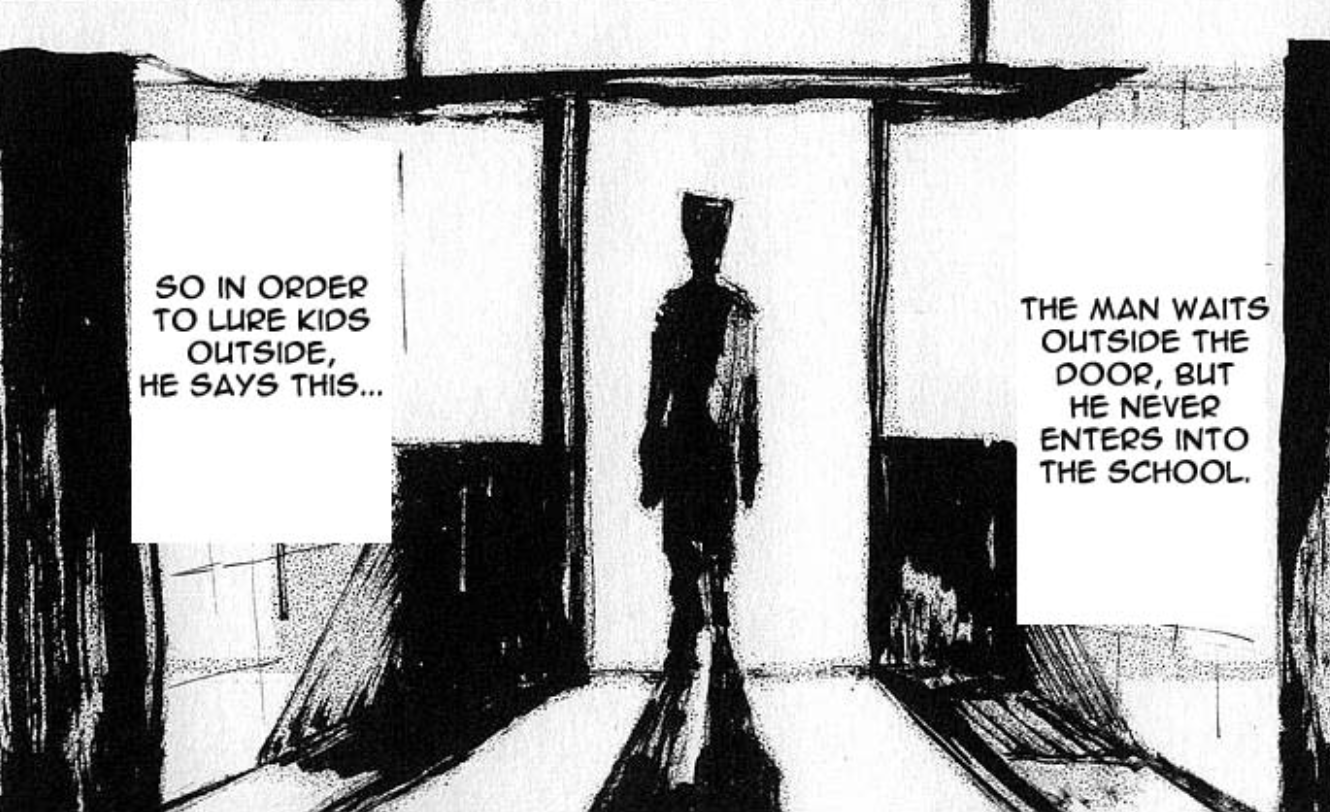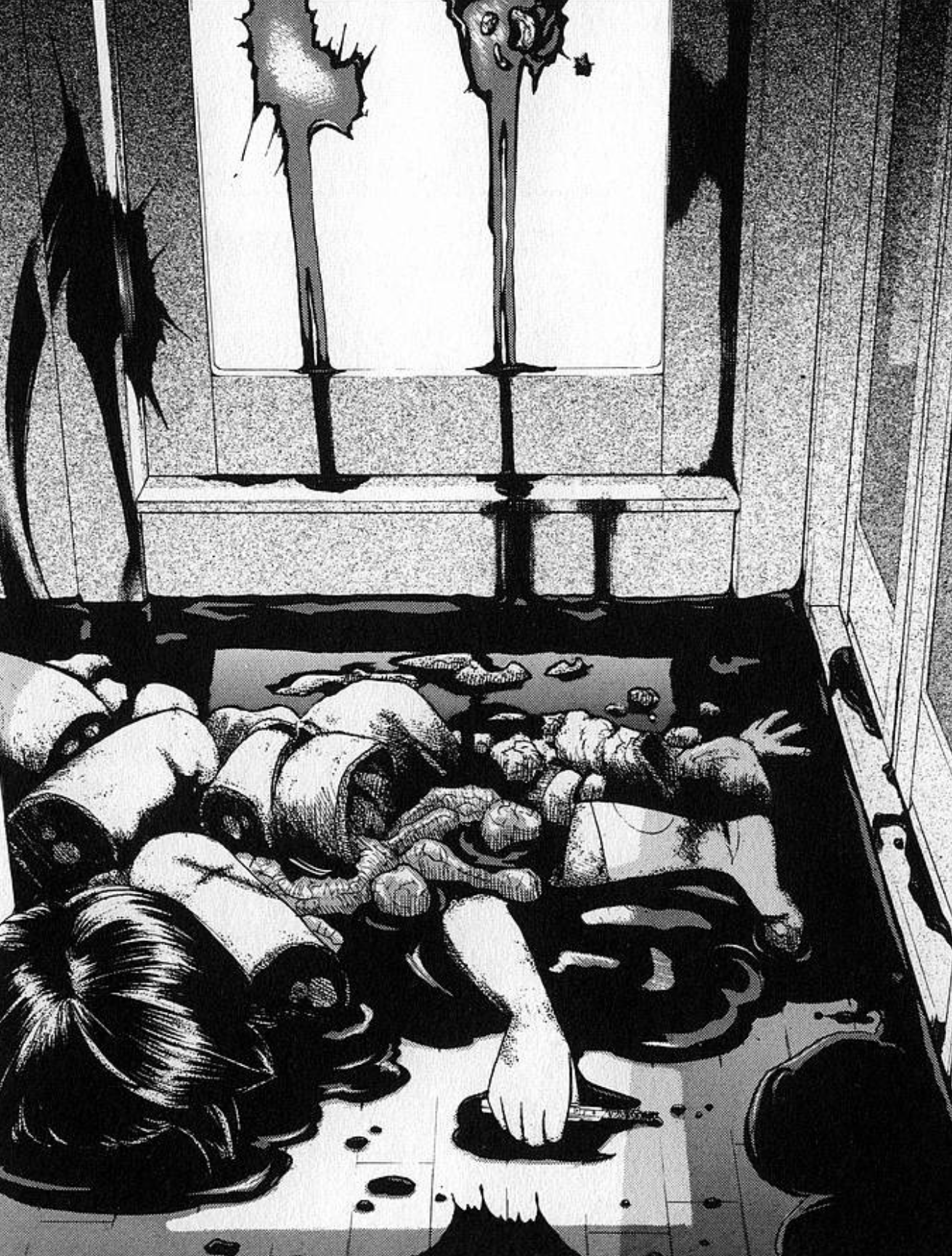Screentone Nightmares: Seeds Of Anxiety
In this third edition of Screentone Nightmares, we’ll be taking a look at what is probably my favorite piece of Japanese horror. This is Seeds of Anxiety, more commonly known by its Japanese name Fuan No Tane. Fuan no Tane began publication in October of 2002 and ran until March of 2005 in the magazine Champion RED. It’s 72 short chapters were collected in three volumes and it was followed by a sequel Fuan No Tane+ in 2007 (Which I will definitely be covering in a future installment). I was also pleasantly surprised to see that a third series, titled Fuan No Tane*, started publication in 2019, although it doesn’t look like any translating has been done yet. I’m crossing my fingers that I can get my hands on the new series soon. Fuan No Tane was created by Masaaki Nakayama who also helms the current ongoing horror series PTSD Radio (on my list for coverage soon) and has handled art on several crime and drama series as well. Fuan No Tane was also adapted into a live action film in 2013 (referred to as Pet Peeve in the west for some reason) that I have not yet had the pleasure of viewing, although it does have moderate reviews so I’ll hope for the best until I see it for myself.
So what is Fuan No Tane? Well, it's an anthology series made up of short, like, really short, horror vignettes. Some of these are only two pages. Just little snippets, little ideas and thoughts. Seeds. Unsettling scenes, glimpses of darkness that burrow into the back of your mind, waiting to sprout in the night as you walk to your car or reach to turn the light off before bed. Each chapter features a handful of these vignettes centered around a specific theme such as a place, a situation, or a type of supernatural motif. Examples of themes include “School”, “Those Who Call Out”, “In Your Home”, and “Something Strange…”. Some of these are obvious, others more vague. Vagueness is one of the strong points of this title. Ambiguity, subtlety, brevity, and a dash of the surreal all coalesce into a strong and lasting amalgam of horror. Uncanny is a word that comes to mind. Fuan No Tane takes the mundane and twists it, just a little, to make it unreal.
It gives a face to the unsettling sensation of walking down a dark hallway or glancing out a window at night. We tell ourselves that these little fears are just remnants of childhood, extensions of our insecurities, but Fuan No Tane posits that they could be real and offers tangible, though no less unexplainable causality. There is a thread of urban legend here, of “I heard from my friend about this thing that happened to their brother…” and so on. The breadth of the work ranges from the vile and immediately dangerous to the charming and harmless, wreathing the common person’s world with supernatural suggestion. Nakayama’s art is strong in its simplicity. Nothing is so stylized that it takes you out of the easy, commonplace settings, but his imagery is always satisfying in the payoff. Something here will stick with you, whittle away at your nerves the next time you find yourself alone. Shadows in dark alleys, ghastly faces pressed against windows, human forms distorted and twisted. The remarkable mastery of strange and supernatural form is top notch.
One of my favorite chapters is “The Stingy Buyer” where a second hand book repeatedly falls from a man’s bookshelf. He considers throwing it away, he didn’t pay much for the old paperback after all. On his way to the garbage he’s stopped by...what? The book's previous owner? Maybe. But something is there, staring at him, pleading with it’s disembodied eyes from the darkness of another room. In another titled “Rainy Day” we follow the members of a family, all at work at different household chores on a rainy afternoon, plagued by hazy visions in the downpour. Is it a trick of the light or has the spring rain brought more than flowers out? There’s beauty and warmth in a lot of these tales. In “Message” a boy takes his sick sister’s teddy bear on a sightseeing tour around their town so it can whisper to her while she sleeps, tell her all about the things she’s too ill to go out and see herself. Others are sinister and mean spirited. In “Ear Slashing Monk” two children are followed by a strange figure, always hiding just out of sight. When the figure snaps the shears it holds...well, just read that one for yourself and find out what happens.
If you’re a fan of anthologies, quiet horror, urban legends, and the supernatural then check this out. I would also highly recommend it to fans of Alvin Schwartz’s Scary Stories To Tell In The Dark series. With its simplicity and memorable imagery, I drew an instant comparison upon my first reading to those books that stole so many peaceful hours of sleep from me as a child. Watch this space for upcoming discussions on Seeds of Anxiety+ and PTSD Radio.

Join Justin as he chats with actor, author, and sculptor Daniel Stern about ghost towns, C.H.U.D. the musical, Marv, his new book Home and Alone, and more!
Join Justin as he chats with New York Times bestseller, Bram Stoker award winner, and editor of Weird Tales Magazine Jonathan Maberry about curating Weird Tales, the myth of writer’s block, Conan, classic horror films, and more!
Join Justin as he chats with singer and songwriter Tyler Lyle about his childhood in the deep south, shedding religion for philosophy, the birth of The Midnight, nostalgia as a double-edged sword, an upcoming graphic novel from the band, new music, and more!
Join Justin and special guest co-host Howie Bentley of Cauldron Born and Briton Rites as they chat with legendary writer Michael Moorcock about drunken nights with Fritz Leiber, Karl Edward Wagner, the sorcery of Elric, Blue Oyster Cult, and more!
Join Justin as he chats with iconic guitarist and songwriter Steve Vai about developing creativity on the fret board, meditation, his relationship with Devin Townsend, horror movies, and more!
Join Justin as he chats with artist, illustrator and bodybuilder Julie Bell about witches, painting freely, fitness, Boris Vallejo, overcoming challenges on the canvas, and more!
Join Justin and special guest co-host Howie Bentley of Cauldron Born and Briton Rites as they chat with legendary author Ramsey Campbell about classical music, horror films, Clark Ashton Smith, H.P Lovecraft, writing fiction that drips with dread, and more!
Join Justin as he chats with legendary film composer and musician Claudio Simonetti about Demons, Dario Argento, Italian horror, Goblin, and more!
Join Justin as he chats with actor Linnea Quigley about Night of the Demons, dancing in graveyards, pets, Charles Band, Lloyd Kaufman, and more!
Join Justin as he chats with musician John Bush of Armored Saint about Hellraiser III, managing musical input amongst band members, tough tours, Anthrax, and more!
Join Justin as he chats with actor Juliet Landau about cultivating her childhood creativity, her directorial debut A PLACE AMONG THE DEAD, Drusilla, BUFFY THE VAMPIRE SLAYER, and more!
Join Justin as he chats with actor Karyn Parsons about making her film debut in a horror movie, Michael Jackson vs Prince, the influence of James Avery on and off set of The Fresh Prince of Bel-Air, her journey as an author, and more!
Join Justin as he chats with actor Geraint Wyn Davies about religion, improv, having fun on the stage, his memories filming Forever Knight, and more!
In this round table discussion, Justin is joined by Howie Bentley of Cauldron Born, Jason Tarpey of Eternal Champion, and Deathmaster of Doomsword to discuss their personal history with Sword and Sorcery, Richard Tierney’s Simon of Gitta series, Poul Anderson’s The Broken Sword, underrated gems within the genre, new projects from their respective bands, and more!
Join Justin as he chats with legendary vocalist Bruce Dickinson about growing up on the pulps, Hammer horror films, writing fiction, psychedelic experiences, and more!
Join Justin as he chats with actor and martial artist Taimak about Kung Fu flicks, becoming Bruce Leroy, Julius Carry, mental training, and spiritual experiences.
Join Justin as he chats with actor Darrin Baker about Jayce and the Wheeled Warriors, method acting, booth work, Broadway, superstition, and more!
Join Justin as he chats with game developer, CEO of Pirate Software, and hacker Jason “Thor” Hall about internet security, classic games, Coast to Coast AM, Heartbound, and more!
Join Justin as he chats with actor John Kapelos about his days on the stage, his nights filming Forever Knight, getting in the zone as a performer, and more!
Join Justin as he chats with actor Ilkka VIlli about the evolution of Alan Wake, performing Herald of Darkness live, method acting, motion capture, Remedy Entertainment, and more!
Join Justin as he chats with actor Andrew Wincott about being heckled on stage, hammer horror films, playing a devil, singing his own theme song as Raphael, and more!
Join Justin, Nick, and Angelique as they chat with comedian, actor and co-host of The Last Podcast on the Left Henry Zebrowski about cryptids, chaos magic, Scientology, horror movies, psychedelic experiences, and more!
Join Justin and Nick as they chat with filmmaker and YouTuber James Rolfe about the Jersey Devil, bad games, Troma films, Gilbert Gottfried, the birth of The Nerd, and more!
Join Justin and Angelique as they chat with legendary author Dean Koontz about the pitfalls of publishing, pets, balancing writing as a passion and profession, the best and worst adaptions of his work, and more!
Join Justin as he chats with actor Tamaryn Payne about method acting, Mizora, voice acting versus motion capture, theater, and more!
Join Justin as he chats with actor Devora Wilde about cats, acting on the stage, the Titanic, becoming a Githyanki warrior, Baldur’s Gate 3, and more!
Join Justin as he chats with musician Don Dokken about A Nightmare on Elm Street III, his new album, life on the road, Robert Englund, and more!
Join Justin as he chats with musician Mick Mars about classic horror, creating your own sound as a guitar player, the supernatural, new music, Motley Crue, and more!
Join Justin as he chats with actor Samantha Béart about Hellraiser, fast times at acting school, bringing Karlach to life, motion capture, radio dramas, and more!


















































Join Justin as he chats with actor Lisa Schrage about her vast book collection, Prom Night II, becoming Mary Lou Maloney, long lost film props, her first horror conventions, and more!